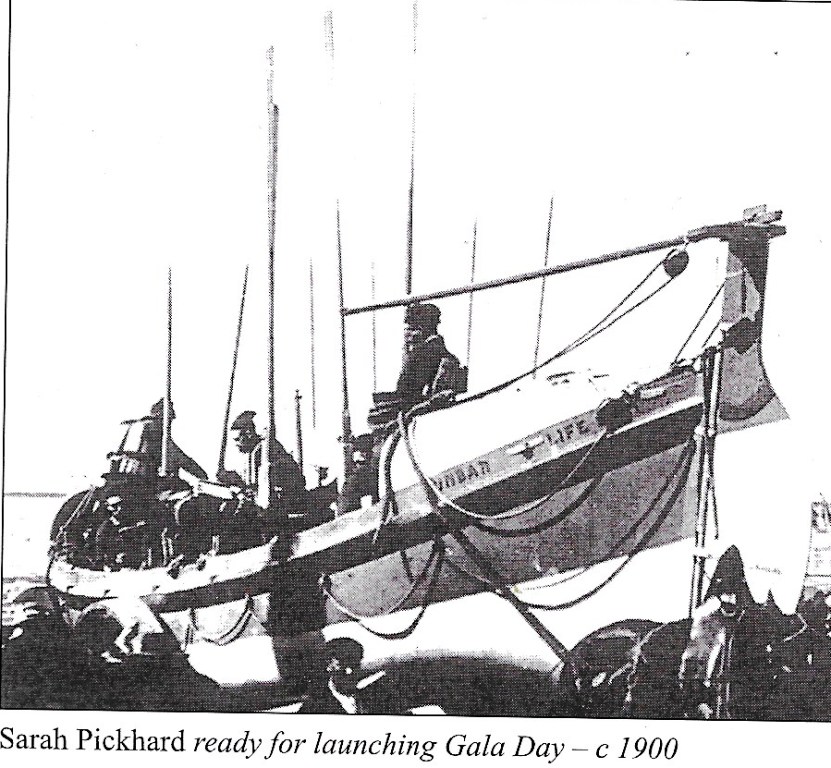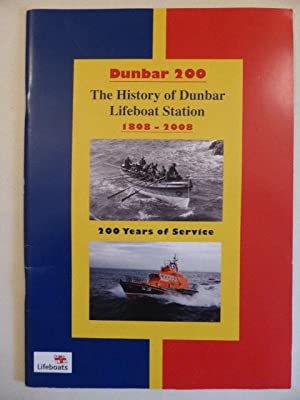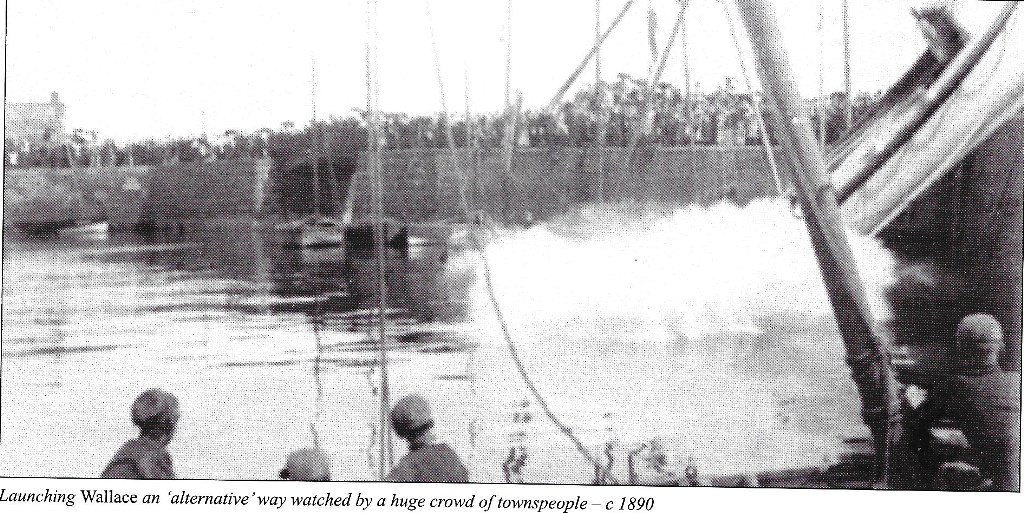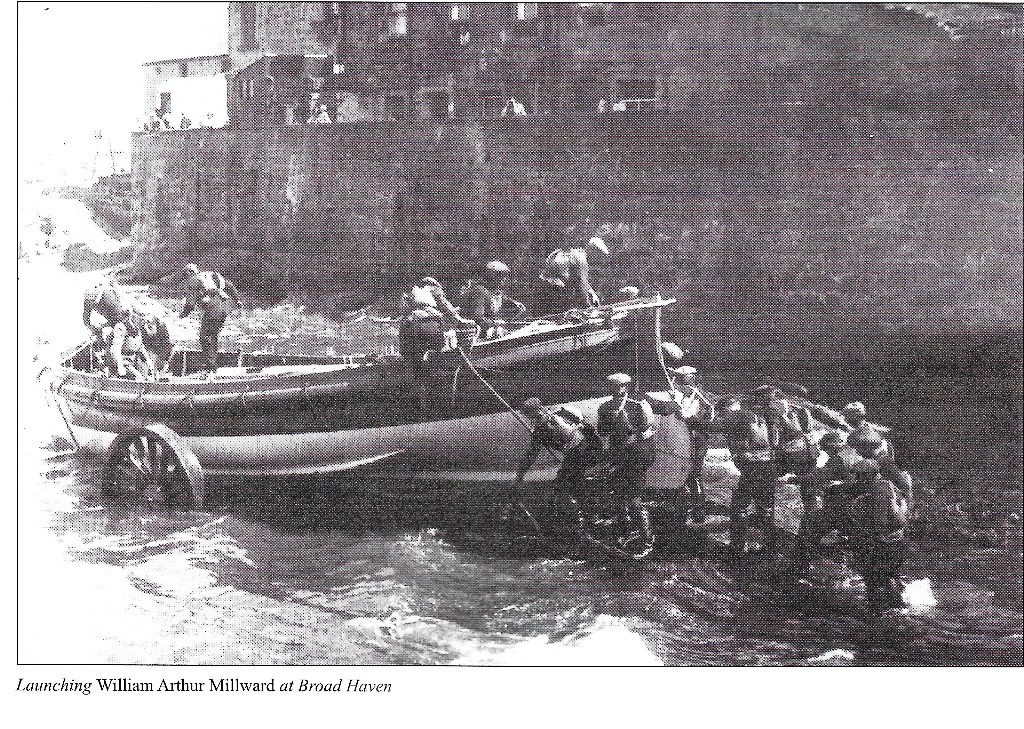This month we are looking at some of the lifeboats that have served Dunbar so well over the years. The photos come from the book Dunbar 200: The History of Dunbar Lifeboat Station 1808 – 2008 (cover below) published by the Dunbar RNLI. Permission has been given to include the photos here by the current president of the Dunbar RNLI.
The book – written by the then president Ivor McPhillips – tells us that the first RNLI lifeboat to be stationed in Dunbar was The Wallace. There had been lifeboats in Dunbar before this and Dunbar 200 refers to David Anderson’s book History of the Dunbar Lifeboat as stating that the first lifeboat arrived in 1808 after a successful public subscription.
The photo above (Dunbar 200 p19) shows The Wallace being launched from the harbourside c1890. This was not the normal way of launching the lifeboat. The book states “She [The Wallace] was a self-righter, 33 ft long, 8 ft in the beam and drawing 5ft. She rowed ten oars, was equipped with sails and , with a crew of 13 volunteers, was destined to serve in Dunbar for nearly 30 years”. On its arrival in 1865, The Wallace was led down Dunbar High Street by 4 horses, with a procession of local worthies behind and large crowds turned out on the day. This lifeboat saved 42 lives during service.

The next lifeboat to arrive at Dunbar – in 1893 – was the Sarah Pickard (photo above) – and this was of a similar design to The Wallace. In 1896, the Sarah Pickard went to the rescue of the 1200 ton Poderosa from Grimsby and found herself in trouble. The then bowman Walter Fairbairn was quoted in a newspaper article as stating “The lifeboat approached the wreck and by careful work, the coxswain managed to get her lee side between the ship and the inner reefs…. To our dismay, however, it was soon apparent that it would be well nigh impossible to get out again unless the seas abated”. The Ponderosa’s crew insisted on boarding the lifeboat and this was “a double burden”. Walter Fairbairn continued “Help came to us from ashore. The Rocket Brigade who had been struggling to get a line aboard the wrecked vessel, made even greater efforts, and was at last successful.”. The ship’s crew were taken to shore by the Rocket Brigade lines and the lifeboat was then – in calmer seas – able to be rowed back to the harbour. It’s hard to fully understand the extent to which these men risked their lives in a boat with oars as today we are so used to the modern lifeboats.
In 1901, the new lifeboat William Arthur Millard arrived in Dunbar to great acclaim. This was a bigger boat and the book notes “The roads at Hedderwick Hill and at Skateraw had to be widened to let her through to launch from these places”. The photo above shows the Millard being launched down the slope at Broad Haven next to the Old Harbour. One of the Millard’s most notable rescues was of the King Ja Ja (details) in 1905. Walter Fairbairn, now Coxswain Fairbairn remembered the drama of the rescue. “To leave the harbour, we had to pass through a fairly narrow passage, invisible in the rush of the storm. Huge waves dashed unceasingly through that passage, threatening to overwhelm our pigmy boat… For four or five hours, we battled against the sea… The men pulled their oars as for life itself”. Having reached the wreck, Walter Fairbairn comments “Never have I seen men more grateful for release than these nine poor fellows who had clung to the wreck Ja Ja.” Coxswain Fairbairn certainly had a way with words and even if there might be some exaggeration in his descriptions, this rescue certainly seems perilous to both lifeboatmen and the crew of the Ja Ja.



You must be logged in to post a comment.